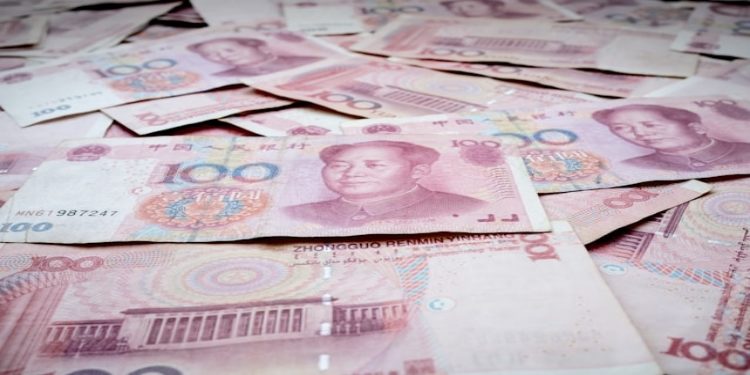Introduction
The Yuan, also known as the Renminbi (RMB), has emerged as a significant player in the global financial arena, particularly within the dynamic landscape of Asian markets. Its journey from a domestically used currency to an internationally recognized medium of exchange has been marked by strategic reforms and policy initiatives by the Chinese government. In this article, we delve into the multifaceted role of the Yuan in the Asian financial market landscape, exploring its importance in international trade, its growing presence in regional financial markets, and its implications for Asian economies. Here, we discuss the Yuan’s significance in international trade and its impact on businesses and governments alike. If you wish to learn about investing with education companies, you might consider visiting the Yuan Rebel Site.
Yuan’s Importance in International Trade
The Yuan’s role in international trade has expanded significantly in recent years, driven by China’s growing influence in global commerce. As the world’s second-largest economy and a major trading nation, China has actively promoted the use of its currency in cross-border transactions. This push has been facilitated by the gradual internationalization of the Yuan, which has seen it being included in the basket of currencies comprising the International Monetary Fund’s (IMF) Special Drawing Rights (SDR).
The adoption of the Yuan in international trade offers several advantages for businesses and governments alike. For businesses, using the Yuan can mitigate currency exchange risks and reduce transaction costs, especially when trading with China. Additionally, it provides access to China’s vast consumer market and facilitates smoother cross-border transactions. For governments, promoting the internationalization of the Yuan enhances their currency’s status on the global stage and strengthens economic ties with China, a key trading partner for many countries.
Despite these benefits, challenges remain in the widespread adoption of the Yuan in international trade. One major hurdle is the limited convertibility of the Yuan, as China maintains strict controls on its capital account. This restricts the free flow of the currency and complicates its use in cross-border transactions. Additionally, concerns over transparency, regulatory issues, and geopolitical tensions can deter some businesses and governments from embracing the Yuan fully.
Yuan’s Role in Regional Financial Markets
In addition to its significance in international trade, the Yuan has also gained traction in regional financial markets across Asia. Countries in the region are increasingly using the Yuan for various financial activities, including investment, financing, and currency reserves management. This trend is fueled by China’s growing economic influence and the deepening integration of Asian economies.
One notable example of the Yuan’s prominence in regional financial markets is its usage in offshore financial centers such as Hong Kong and Singapore. These cities serve as hubs for Yuan-denominated financial products and services, catering to both domestic and international investors. The development of offshore Yuan markets has facilitated cross-border capital flows and provided additional channels for Yuan liquidity.
Impact of Yuan Internationalization on Asian Economies
The internationalization of the Yuan has significant implications for Asian economies, both in terms of opportunities and challenges. On the one hand, greater use of the Yuan in trade and investment can enhance economic integration within the region and foster closer ties with China, a major trading partner for many Asian countries. This can lead to increased market access, trade diversification, and economic growth.
Furthermore, the Yuan’s role as a regional reserve currency could provide Asian central banks with an alternative to traditional reserve currencies like the US dollar and the euro. Diversifying reserve holdings in the Yuan can help mitigate risks associated with currency fluctuations and enhance financial stability in the region.
Yuan’s Role in Belt and Road Initiative (BRI)
The Belt and Road Initiative (BRI), China’s ambitious infrastructure development and connectivity project, has further amplified the importance of the Yuan in the Asian financial market landscape. As part of the BRI, China has been promoting the use of the Yuan in financing infrastructure projects and facilitating trade along the Belt and Road routes.
The Yuan’s role in the BRI is twofold: first, as a financing currency for BRI projects, and second, as a settlement currency for trade and investment activities related to the initiative. By promoting the use of the Yuan in BRI transactions, China aims to internationalize its currency further and expand its influence in the global financial system.
Challenges and Future Outlook
Despite the progress made in the internationalization of the Yuan, several challenges lie ahead in its path to becoming a truly global currency. One of the primary challenges is the need for further reforms to liberalize China’s capital account and improve the Yuan’s convertibility. This would require greater financial market openness, enhanced regulatory frameworks, and continued efforts to strengthen China’s financial infrastructure.
Conclusion
In conclusion, the Yuan’s evolution from a domestic currency to a global player has reshaped the Asian financial market landscape, offering new opportunities and challenges for economies in the region. Its increasing use in international trade, growing presence in regional financial markets, and role in initiatives like the BRI underscore its significance as a key currency in Asia and beyond. As China continues to pursue its economic objectives and reforms, the Yuan’s influence is likely to expand further, shaping the future trajectory of the Asian financial market landscape.
David Prior
David Prior is the editor of Today News, responsible for the overall editorial strategy. He is an NCTJ-qualified journalist with over 20 years’ experience, and is also editor of the award-winning hyperlocal news title Altrincham Today. His LinkedIn profile is here.













































































